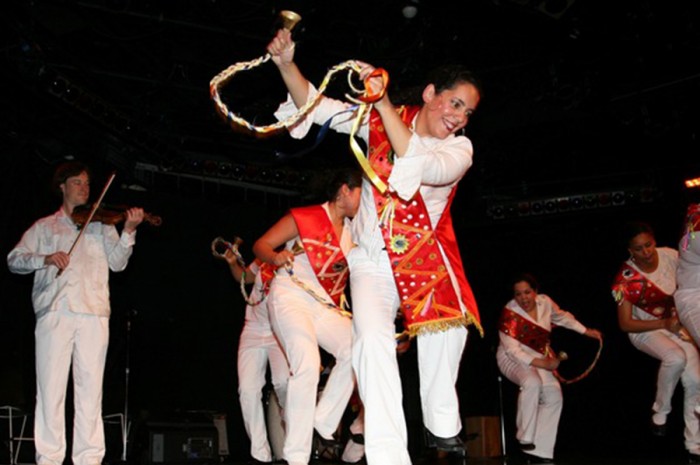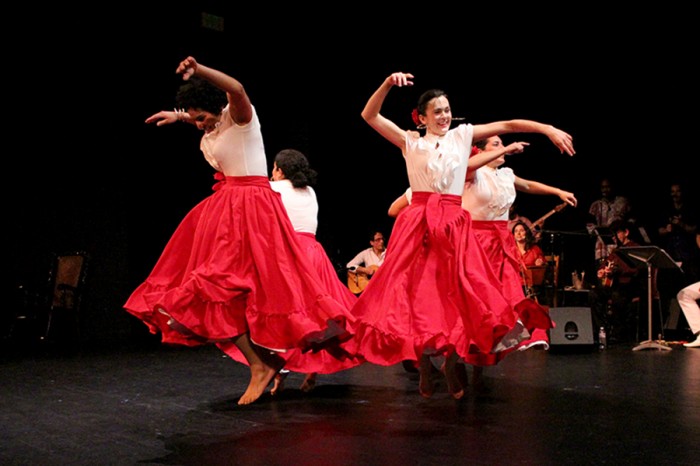
It’s that time of year again. The leaves that fall have fallen, downtown is wrapped in lights and El Centro de la Raza is selling Christmas trees. For many, now is a time for family, food and holiday traditions.
For artist and anthropologist Monica Rojas, it’s a time for music, education and celebration with the Seattle Atajo de Negritos, a group of Afro-Peruvian caroler-style musicians steeped in a tradition specific to Chincha, Peru.
“It’s where people go from house to house to sing, but it’s combined with a lot of stepping and indigenous songs,” explained Rojas.
Beyond the standard door-to-door caroling,
have visited homes and churches with Spanish-speaking populations ringing bells, dancing and singing songs. But these Seattle carolers don’t just herald Christmas, they educate about culture.
“The first two years we focused on Peru and talked about colonialism in Peru.”

Rojas even invited musicians from Peru to perform. The songs chosen for this concert told a story specifically from the point of view of those identifying as members of the African diaspora.
It was such a success that each year since the show has grown larger and more complex. The international performers have been joined by a cast of people who live here in Seattle — many of whom are a part of the African Diaspora from Peru. The group has also made an effort to include youth in each performance.
“It’s been huge on so many levels for the kids who performed,” said Rojas. “Their parents can’t tell me enough how much their kids are feeling proud of playing music or showing what they’ve learned. Because they understand where they come from.”
Though Rojas received her doctorate in anthropology in 2007, she does not consider herself a traditional academic.
“I decided to use art as my way to do anthropology and to educate and raise awareness about the African Diaspora.”
To that end, she began the DE CAJóN Project five years ago to help bridge local and global efforts to promote the cultural contributions of African Peruvians.
For the past three years, in conjunction with Movimiento Afrolatino Seattle (MAS), Rojas has also directed an Afro-Peruvian concert to celebrate this cultural heritage.
“This year because of MAS, this pushed my artistic vision, and I wanted to explore and push my boundaries.”
This Friday and Saturday, Rojas will showcase an exploration of African Diaspora artistic routes to Latin America through the lens of a Peruvian Christmas tradition.
“Inga comes from Inca. Mandinga comes from West African,” Rojas expanded. “In Peru, we have a saying: ‘El que no tiene de inga tiene de mandiga’: we are all mixed.”
This year, “De Inga y Mandiga” has evolved into a bilingual (English and Spanish), multidisciplinary theater piece that explores the music and dance connections born of cultural mixing via African Diaspora routes in Latin America. Featuring local and international artists, there will be music and dance from Panama, Colombia, Venezuela, Peru and Argentina.
Catch the show at the Langston Hughes Performing Arts Institute:
When: Friday, Dec. 12 at 10:30 a.m. (School Matinee) and 7:30 p.m.; Saturday, Dec. 13 at 2p.m. and 7:30 p.m.
$10-$20 tickets for sale: http://diym.brownpapertickets.com/

